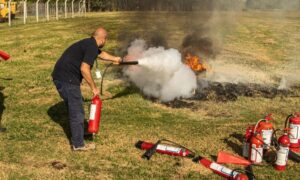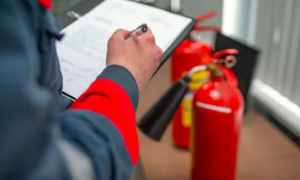Steel buildings are renowned for their strength, durability, and design flexibility. However, there’s a common misconception that steel structures are inherently vulnerable to fire. While it’s true that steel’s properties change at high temperatures, leading to potential weakening and collapse, modern fire safety techniques can effectively mitigate these risks.
Let’s explore key strategies for enhancing fire safety in steel building construction.
Understanding the Challenge
Steel, unlike concrete or timber, doesn’t burn but loses strength significantly when exposed to high temperatures. At around 550°C (1022°F), steel loses approximately 50% of its yield strength, making it susceptible to deformation and failure. This vulnerability necessitates robust fire protection measures.
Fire Safety Strategies
- Passive Fire Protection: This involves using fire-resistant materials to protect the steel structure. Common methods include:
- Intumescent Coatings: These coatings expand when exposed to heat, forming an insulating layer that protects the steel. They are aesthetically pleasing and offer good fire resistance.
- Spray-Applied Fire-Resistive Materials (SFRM): SFRMs, like cementitious or fibrous materials, are sprayed onto steel members to create a protective layer. They are cost-effective and suitable for complex shapes.
- Concrete Encasement: Encasing steel columns and beams in concrete provides excellent fire resistance and adds structural strength.
- Fire-Rated Drywall: Using fire-rated gypsum boards for walls and ceilings helps contain fires and protect structural elements.
- Active Fire Protection: These systems actively work to detect and suppress fires, including:
- Sprinkler Systems: These are crucial for early fire suppression and can significantly reduce the risk of structural damage.
- Fire Alarms and Detection Systems: Early detection allows for quick evacuation and response, minimizing fire spread and potential damage.
- Smoke Control Systems: These systems use fans and vents to manage smoke movement, improving visibility for evacuation and firefighting efforts.
- Design Considerations: Integrating fire safety in the design phase is paramount. This includes:
- Compartmentalization: Dividing the building into fire-resistant compartments helps contain fires and prevent them from spreading rapidly.
- Protected Escape Routes: Ensuring clear and protected escape routes is crucial for safe evacuation during a fire.
- Structural Fire Engineering: Employing advanced fire engineering techniques allows for optimized fire protection strategies, considering the building’s specific use and occupancy.
Benefits of Enhanced Fire Safety
Investing in fire safety measures for steel buildings offers numerous benefits:
- Life Safety: The primary goal is to protect occupants and firefighters during a fire.
- Property Protection: Minimizing structural damage and potential collapse helps protect valuable assets.
- Business Continuity: Reduced downtime and faster recovery after a fire incident.
- Insurance Premiums: Implementing robust fire safety measures can lead to lower insurance premiums.
- Peace of Mind: Knowing that your building is equipped to handle fire emergencies provides valuable peace of mind.
Building a Safer Tomorrow
While steel buildings present unique fire safety challenges, a combination of passive and active fire protection systems, coupled with thoughtful design considerations, can effectively mitigate these risks. By prioritizing fire safety, building owners and developers can ensure the safety of occupants, protect their investments, and contribute to a more resilient built environment. Visit this metal building buyer’s guide to learn more.



































